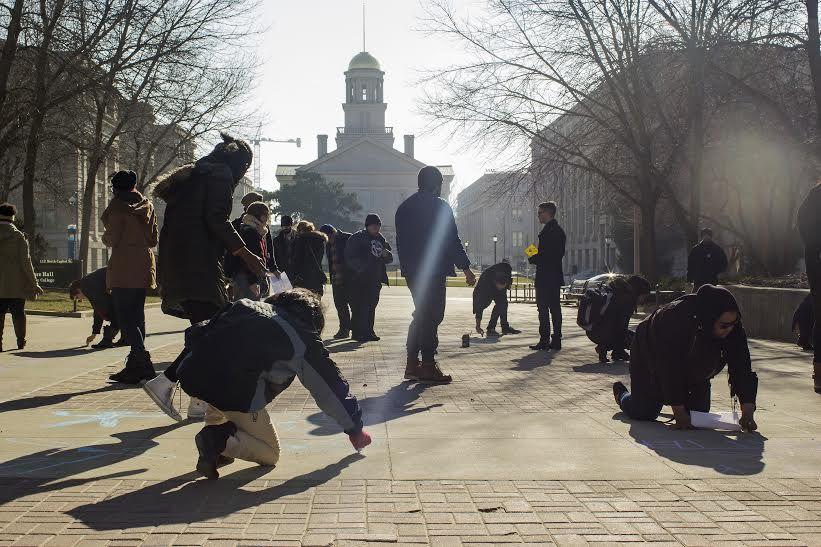Clothed in controversy: Statue sparks First Amendment debate
A 7-foot-tall, sculpted set of Ku Klux Klan robes composed of newspaper articles depicting the history of racial tensions in America was on display at the University of Iowa’s free speech zone Dec. 5, sparking outrage across the campus.
December 11, 2014
A piece of art displayed for less than four hours on the University of Iowa campus has sparked national attention. A seven-foot-tall, sculpted set of Klu Klux Klan robes composed of articles depicting the history of racial tensions in America was on display at the university’s free speech zone, the Pentacrest on Dec. 5, inciting outrage across the campus.
Serhat Tanyolacar, a visiting assistant professor at the University of Iowa and artist of the work, said the meaning of the piece was misunderstood.
“The intent was to raise awareness on contemporary issues on racism and create open discussion on those issues,” Tanyolacar said.
University of Iowa officials were able to remove the display because Tanyolacar did not acquire the correct permits to display the piece. The university went on to say in a memo that it “considers all forms of racism abhorrent and is deeply committed to the principles of inclusion and acceptance.”
“It’s hard to start dialogue about something upsetting without showing something upsetting,” said Frank LoMonte, executive director of University of Iowa’s Student Press Law Center.
LoMonte said the University of Iowa was not in the wrong by removing the artwork due to Tanyolacar’s inability to obtain a permit for the work.
“The government does have the ability to enforce reasonable permit conditions, so long as they are not selectively enforcing,” LoMonte said.
LoMonte also said it is hard to start a conversation on something considered disturbing without showing something that is itself disturbing. The university was within its rights in removing the statue so long as the permit qualifications were the only reason they removed the piece.
“Picking and choosing who is okay to hate is a violation of First Amendment rights,” LoMonte said.
The First Amendment, which protects freedom of speech, does not address hate speech, nor protect citizens against encountering it.
“There’s no legal definition of hate speech,” LeMonte said.
From afar, the statue merely looked like a Klansmen’s robe, something which may be considered analogous to hate speech. Up close, one could see that it was composed of articles depicting the struggle for civil rights.
“Free speech should be protected,” said Tom Hill, ISU senior vice president of student affairs.
Hill went on to say that while freedom of speech should be protected, the fact that the university has a permit policy for works that are displayed in their free speech zone cannot be subverted.
The University of Iowa is not alone in sparking debate over artwork and free speech. In 2002, a mural in Willow Hall on the Iowa State campus depicting soldiers and a scantily clad woman sparked outrage from eight students. The controversy eventually led to the removal of the mural due to mounting pressure from these eight and others.
“If you’re doing more damage than good, then you’re going to an extreme,” said Jared Ingram, a sophomore in kinesiology, in respect to how the First Amendment should be viewed.
Ingram, who grew up in Ferguson, Missouri, said that the First Amendment protections are important, but that things can go too far.
“Things in Ferguson like arson are unnecessary and are an unsuccessful way of protesting,” Ingram said.
“This is a learning experience for so many people,” Tanyolacar said in reference to the situation as a whole.
Tanyolacar said that he understands the pain that the art has caused, but notes that it has started dialogue nationwide. The debate over the statue has added to the national discussion on race sparked by the events in Ferguson, Mo., and New York.

















